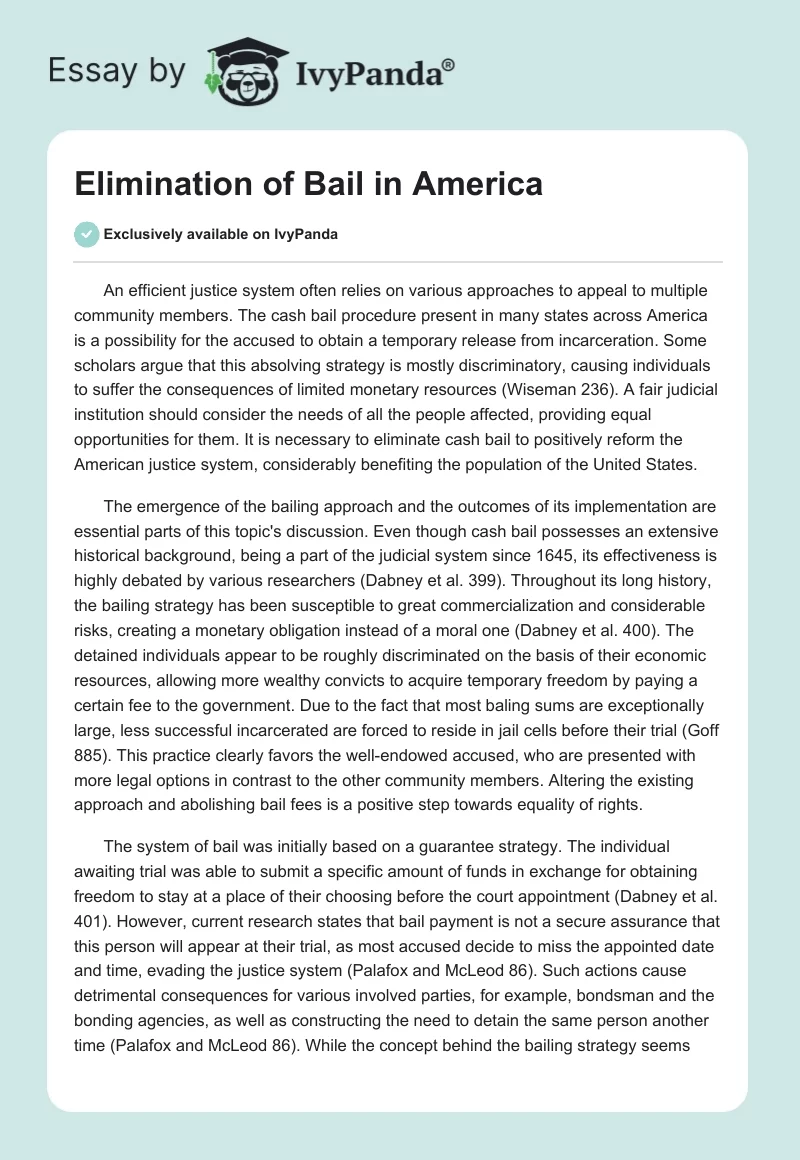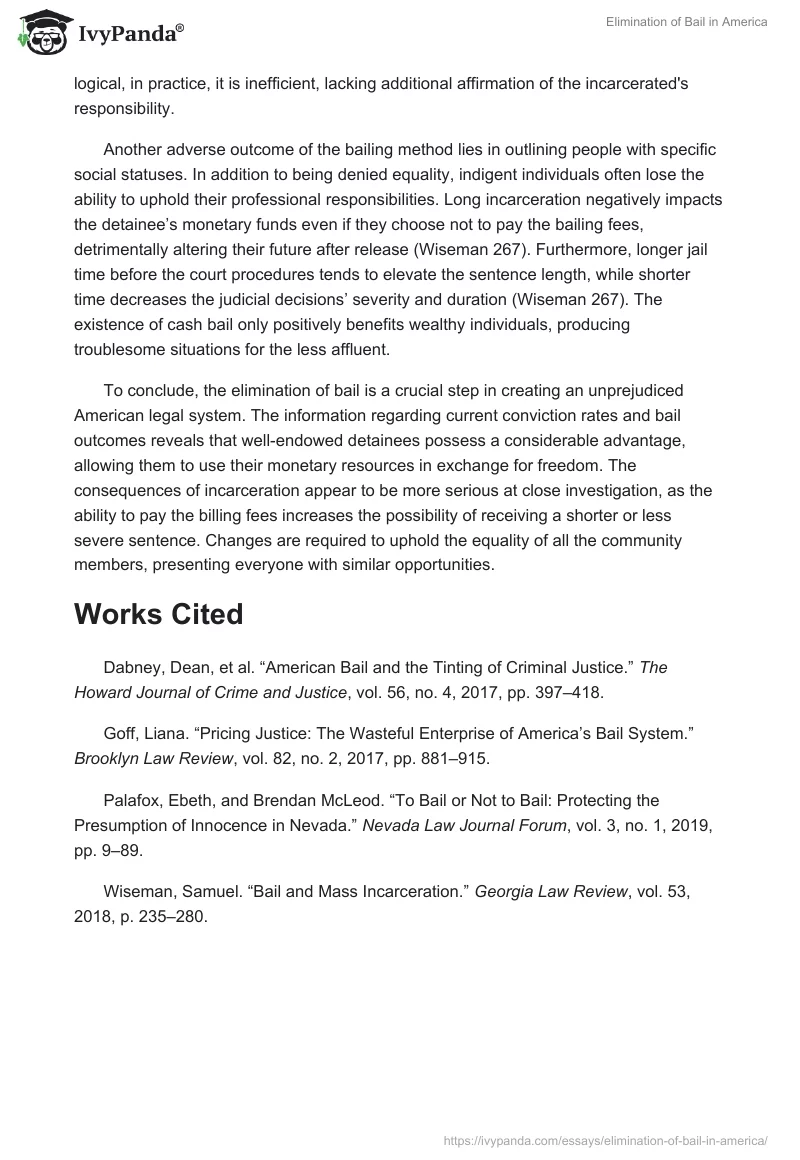An efficient justice system often relies on various approaches to appeal to multiple community members. The cash bail procedure present in many states across America is a possibility for the accused to obtain a temporary release from incarceration. Some scholars argue that this absolving strategy is mostly discriminatory, causing individuals to suffer the consequences of limited monetary resources (Wiseman 236). A fair judicial institution should consider the needs of all the people affected, providing equal opportunities for them. It is necessary to eliminate cash bail to positively reform the American justice system, considerably benefiting the population of the United States.
The emergence of the bailing approach and the outcomes of its implementation are essential parts of this topic’s discussion. Even though cash bail possesses an extensive historical background, being a part of the judicial system since 1645, its effectiveness is highly debated by various researchers (Dabney et al. 399). Throughout its long history, the bailing strategy has been susceptible to great commercialization and considerable risks, creating a monetary obligation instead of a moral one (Dabney et al. 400). The detained individuals appear to be roughly discriminated on the basis of their economic resources, allowing more wealthy convicts to acquire temporary freedom by paying a certain fee to the government. Due to the fact that most baling sums are exceptionally large, less successful incarcerated are forced to reside in jail cells before their trial (Goff 885). This practice clearly favors the well-endowed accused, who are presented with more legal options in contrast to the other community members. Altering the existing approach and abolishing bail fees is a positive step towards equality of rights.
The system of bail was initially based on a guarantee strategy. The individual awaiting trial was able to submit a specific amount of funds in exchange for obtaining freedom to stay at a place of their choosing before the court appointment (Dabney et al. 401). However, current research states that bail payment is not a secure assurance that this person will appear at their trial, as most accused decide to miss the appointed date and time, evading the justice system (Palafox and McLeod 86). Such actions cause detrimental consequences for various involved parties, for example, bondsman and the bonding agencies, as well as constructing the need to detain the same person another time (Palafox and McLeod 86). While the concept behind the bailing strategy seems logical, in practice, it is inefficient, lacking additional affirmation of the incarcerated’s responsibility.
Another adverse outcome of the bailing method lies in outlining people with specific social statuses. In addition to being denied equality, indigent individuals often lose the ability to uphold their professional responsibilities. Long incarceration negatively impacts the detainee’s monetary funds even if they choose not to pay the bailing fees, detrimentally altering their future after release (Wiseman 267). Furthermore, longer jail time before the court procedures tends to elevate the sentence length, while shorter time decreases the judicial decisions’ severity and duration (Wiseman 267). The existence of cash bail only positively benefits wealthy individuals, producing troublesome situations for the less affluent.
To conclude, the elimination of bail is a crucial step in creating an unprejudiced American legal system. The information regarding current conviction rates and bail outcomes reveals that well-endowed detainees possess a considerable advantage, allowing them to use their monetary resources in exchange for freedom. The consequences of incarceration appear to be more serious at close investigation, as the ability to pay the billing fees increases the possibility of receiving a shorter or less severe sentence. Changes are required to uphold the equality of all the community members, presenting everyone with similar opportunities.
Works Cited
Dabney, Dean, et al. “American Bail and the Tinting of Criminal Justice.” The Howard Journal of Crime and Justice, vol. 56, no. 4, 2017, pp. 397–418.
Goff, Liana. “Pricing Justice: The Wasteful Enterprise of America’s Bail System.” Brooklyn Law Review, vol. 82, no. 2, 2017, pp. 881–915.
Palafox, Ebeth, and Brendan McLeod. “To Bail or Not to Bail: Protecting the Presumption of Innocence in Nevada.” Nevada Law Journal Forum, vol. 3, no. 1, 2019, pp. 9–89.
Wiseman, Samuel. “Bail and Mass Incarceration.” Georgia Law Review, vol. 53, 2018, p. 235–280.


